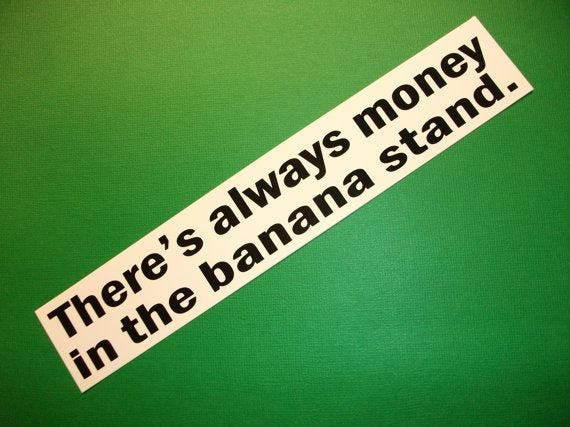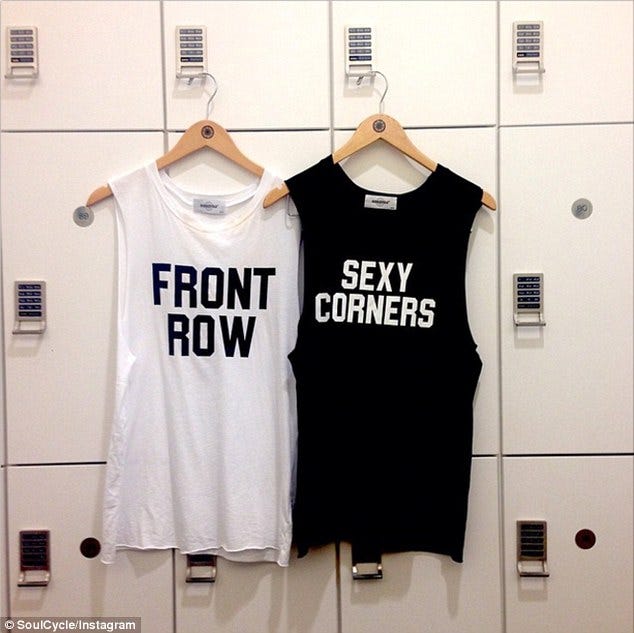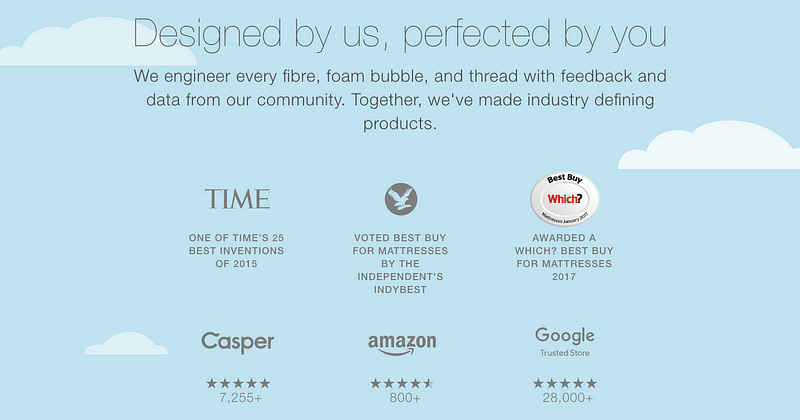3 secret places.
Brand strategy is an excavation.
I’ve written in the past that “You dig and dig and dig until a market path is revealed.”
The perfect story, just like strategy, already exists. There is already a compelling, loyalty-building narrative hiding in the DNA of your brand. If you pull apart the floorboards and start shoveling at the dirt underneath, it will be there.
It’s your job to find it and bring it to life.

This excavation mindset matters because it pushes you to look in the right direction.
Many CEOs I’ve worked with believed that their brand story was either a shallow retelling of, “I had a need for this, so I created it” or an entirely fictitious story made to fit into a product offering.
While it’s true that a good brand narrative may take some finessing, it’s always far, far bigger than a need or a product.
The brand stories that matter are the ones that usher us into a specific future where we are a more ideal version of ourselves.
Let me be clear, however, that this is not a vision or a mission. Nor is it your ‘why’ or reason for existing.
It has nothing to do with you as a brand, and everything to do with the customer as a human being.

What would you say Tesla’s story is?
Is it about the future of electric cars? Really? No, I don’t think so and you likely feel the same way. It’s much bigger than that.
Perhaps it’s the story of our planet — one heroic man’s attempt to reverse the environmental damage of so many generations before him…but again, that feels way too small.
Maybe it’s about the cool, mad scientist that dates actresses and builds awesome machines. That guy that proves everyone wrong and looks good doing it. While that may start to feel more exciting, it’s still far too granular.
Tesla’s story is about our very human need to progress.
It’s both our childhood longing to explore the unknown, and our adult compulsion to break our own limits.
It is the story of how our world should be.
Tesla is the company that turned science fiction into reality.
When you look at this deeper story, utility, environmentalism and engineering all fly out the window.
This narrative captures imaginations. It captures hope and possibility. It connects us to a specific future in which we are more ideal versions of ourselves.
That’s much bigger than the product, the need, or the founder could ever be.
Your company, no matter how small or mundane, can have an equally provocative brand story.
You just have to be willing to dig long enough, and in the right spots.
1. Search for: A hidden connection.
SoulCycle is built on the ideals of grit, determination and suffering.
You know how it goes. Dark rooms, front row politics, loud music, a trainer’s screaming encouragement blaring over the speakers.
It’s meant to be a very soulful experience all about you… but also a very hard, consuming, exhausting experience that leaves you a very sweaty, yet hopefully changed person.
Compare SoulCycle to the last exercise craze that was perhaps this sweeping — Jazzercise or Jane Fonda aerobics of the 70’s and 80’s—and you can see it speaks to a very different mentality.
SoulCycle isn’t about exercise. It’s about belonging to an elite tribe. You only get it if you’ve been in that room.

This didn’t just happen spontaneously.
Somewhere in the mid-2000’s, the founders of SoulCycle realized the definition of health was changing for the affluent American woman.
Concepts of healthy mind and body were melding, a subgroup of upper middle-class millennial women were in constant search of a ‘secret’ to health they didn’t feel they could get from traditional medicine or their doctor, and there was a very strong emerging belief that exercise had to be hard. You had to sweat bucketloads for it to count.

That’s why SoulCycle exalted these virtues in their brand story. They could have talked about weight loss or cardiovascular health but they didn’t.
Instead, they talked about a mind-body connection, meditative sport, pain suffering, and ultimate euphoria.
… and that hidden connection proved to be a goldmine.
I find connections between cultural signals, trends, behaviors, political climates, industry movements, subgroups, emerging tastes, innovations, mentalities — a whole world of indicators — and my client companies.
You know what’s amazing? No matter who the client is, there’s always a hidden connection somewhere.
If you’re a founder, you launched your company because on some level, consciously or subconsciously, you sensed a changing tide.
Founders are always taking in ambient information, passively digesting signals from far outside of their industry, and building their companies on that larger scope of understanding.
The connection exists, and if you can find it, you can leverage it in your brand story.
Unpack your thinking and see where it leads you.
2. Search for: The missing hero.
Plenty of industries have stagnant pockets where, even if there is innovation, users are generally disenfranchised and deserve something better.
That was the case before Casper.
To this day, you can walk into mattress stores like this one (although they’re starting to slowly disappear from the landscape) and indulge miles of choice overload:

There was little to no innovation, either in product or business model.
And very little ever changed.
Casper saw an opportunity to not only enter the space with a different mattress and model, they also saw a chance to assume the voice of a hero in the industry.
Casper is the mattress brand that said enough is enough. There is a better way.

From the outset, Casper positioned itself as a hero that advocated for what was right by the consumer.
No other mattress brand had ever come close to assuming that role.
Language and story that put the consumer in a co-creator, co-hero role amplified that perception, and allowed Casper to change the baseline for the consumer.
Casper woke us up to the fact that sleep should be simple.

There are different kinds of hero roles. You can speak truth to power, you can challenge the status quo, or you can even argue for a return to what’s familiar and right.
Heroes all have one thing in common — they stand for something.
If your audience is lacking an advocate that can fight for what’s in their best interests, you can be that hero.
Playing the hero comes with added scrutiny, and requires commitment as well as a high founder profile… but if you can successfully fill that gap, it comes with a powerful brand story.
3. Search for: A retelling of the past.
Where you come from is important, but that story only matters if you’re willing to tell it in the right way.
Your story is not a history.
It‘s not a recounting of what happened. It’s a point of inspiration that will define everything which happens tomorrow.
In my article on Creating Brand Legends, I point out Chanel as a company that has retold their history as a way of connecting the brand to the future.
Chanel has done a great job of managing their legend, most recently through the Gabrielle Chanel short film series.
In these 20 frenetically breathtaking short videos, a new generation of consumers is reacquainted with Chanel’s personal inflection point as a female designer.
The sixth film in the series, titled Mademoiselle, is especially powerful in placing Chanel in the lives and histories of all of us.
You simply cannot watch this film and not feel as though Chanel changed history, and after her, nothing was the same again.
If you watch those pivotal short films, you’ll understand that Coco Chanel’s story was couched in the new lens of modern feminism. It is not a story of the past. It’s a spark point that will forever define the future, and us as women.
You, too, can stitch yesterday to tomorrow, and create a compelling brand story.
A story of the past should be a lens that also provides a glimpse into the future. It is both forward-looking and backward-looking.
The narratives that stir us have to power to reveal who we once were, and who we will become.
Increasingly for brands, story is the strategy and strategy is the story. If you can weave a story arc that shows your vision of the world and how your brand will get us to that future, you will draw consumers to your horizon.
Show them who they can become.

